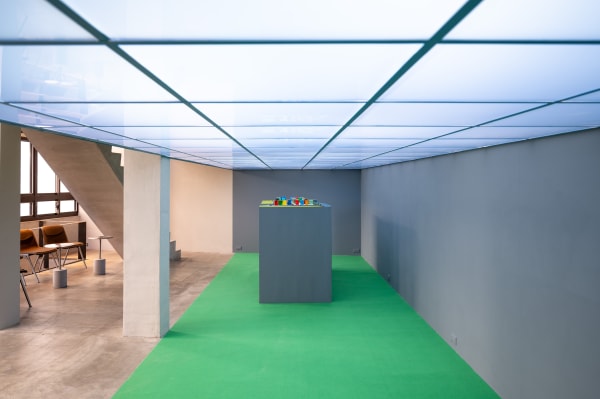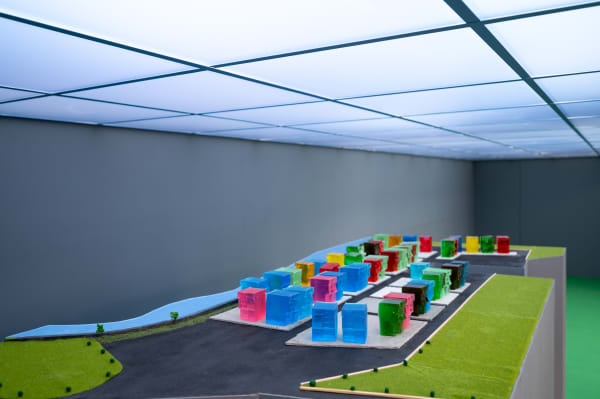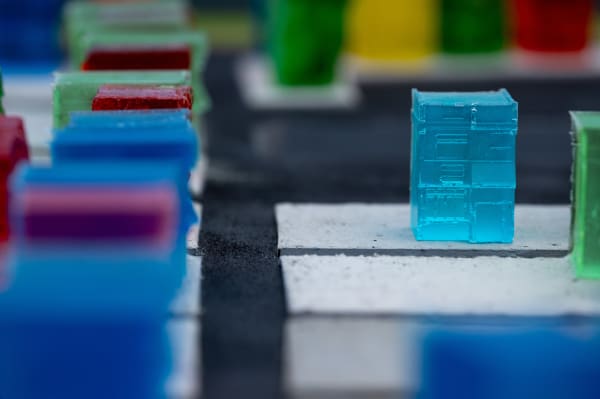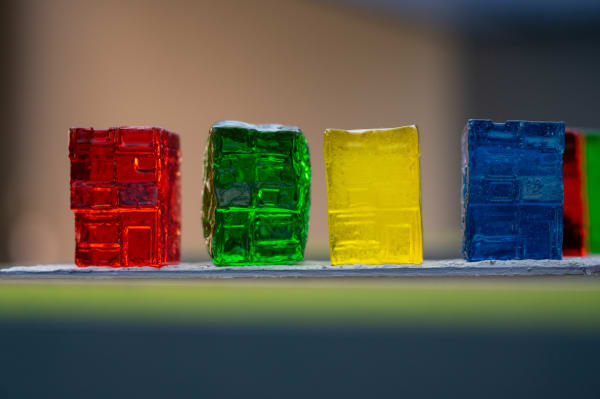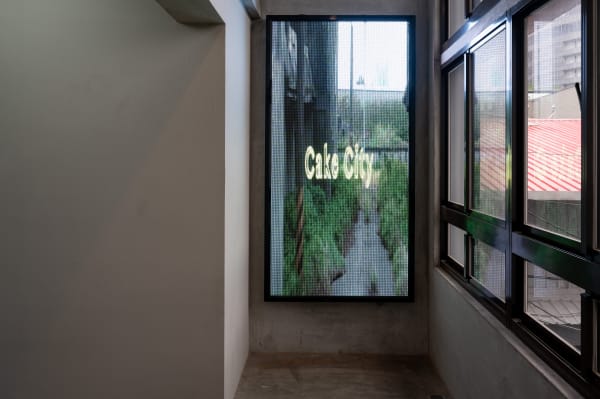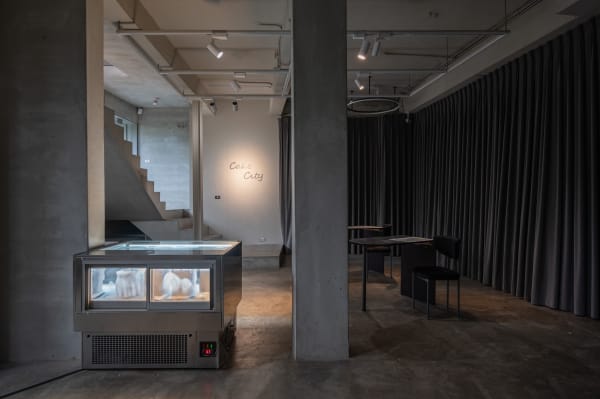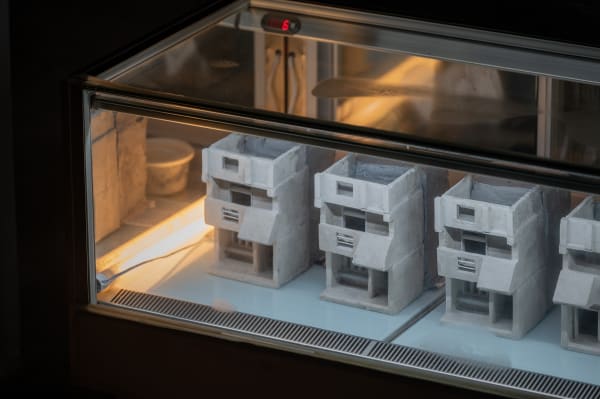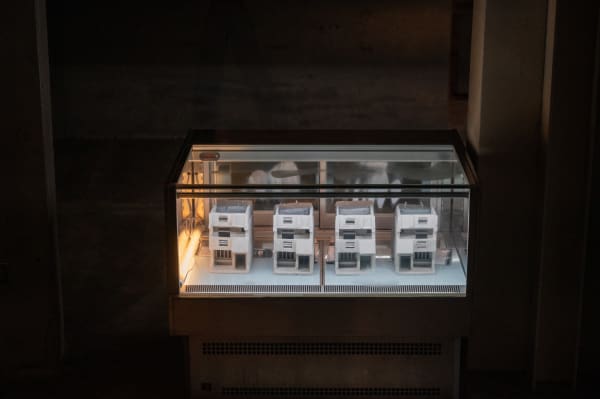Huang Pei-Chi: Cake City : Solo Exhibition
“We begin by laying down a flat blue plane, followed by a green one. In the space between these two planes—less than a centimeter apart—is where we live. We live on this green surface, sometimes napping here, sometimes playing there.” — How to Build a Sky?, Diary Notes
A path cuts through the countryside, and the view shifts slowly, like the movement of a rail-bound vehicle. A patch of gray in the distance draws the eye forward. Along this predetermined yet unfamiliar route, GPS navigation becomes irrelevant. One can only follow the road as it unfolds. What first appears as a gray plane gradually turns into volumes of shadow and light—gray cubes rising from the landscape. The gaze drifts between distraction and focus, landing on these lifeless structures. Once, within outlined parcels of land, blocks were squeezed into place, fitted with rectangular openings for windows and doors. At the time of their construction, these buildings carried the hope of a future. By holding Shift and clicking the mouse, one could effortlessly duplicate rows of imagined homes.
But time halted as spatial planning froze in place. What was meant to be a new town center is now like a lost file in memory—an imagined life displaced by the sprawl of the city. These structures were never lived in. They now resemble mirages of abandoned hope. Detached from the functions they were meant to serve, the buildings interact with their surroundings as independent entities. Once built for habitation, they now coexist with weeds, gradually separating from human life.
Even the future, no matter how tangible or specific, can be forgotten. It can be cast aside by the speed of acceleration. Meanwhile, a lighter, faster game has taken hold: presale. Once, one bought a future in the form of a building. Now, a rendering is enough. Curved walls and glossy finishes define the showroom experience, where buyers are invited to taste different styles of dream homes. Floor plans serve as flat representations of imagination, each one offering a preferred aesthetic flavor. The pleasure lies in the illusion of craftsmanship, expansive square footage, and projected futures. Architecture no longer needs to be built to be seen. It takes shape in the mind—quickly, effortlessly—like a piece of cake. No measurements are needed, only a lingering sweetness remains.
In Cake City, Huang Pei-Chi turns her attention to the fringes of the city, where abandoned construction sites—so-called “ghost buildings”—stand unfinished. The project extends from this sight of halted progress to explore the speculative illusions of the real estate industry. Presented as a fictional cake-town development, Cake City transforms the gallery into a real estate interface. Through edible cake-house sculptures and simulated sales strategies, Huang mirrors and critiques the marketing language of housing. The illusion of presale hovers subtly throughout. There is no need for a physical structure. Entering the sales center is like tasting a cake: the building vanishes, but a trace of sweetness remains.
-
Born in 1994, Taiwanese artist Huang Pei-Chi works with photography and spatial installation.
“When flipping through a book quickly, the ink on the pages sometimes catches the light and glimmers. Then, all of a sudden, an image captures your attention and draws you into the space within.”
For Huang, everyday scenery resembles a book being flipped through at speed—flickering, distracting, constantly slipping past the eye. What creates a sense of estrangement is not the reflectiveness of the scene itself, but the way a coincidental image suddenly pulls the viewer into another time and space. These scenes are not necessarily extraordinary, yet they often feel just strange enough to provoke doubt. It is as if the world of objects operates on its own system, one from which the artist, as an untimely passerby, finds herself excluded.
Recent exhibitions include the solo show A Good-for-Nothing Haunted by Things at Fotoaura institute of photography in Tainan (2023), nominated for the 21st Taishin Arts Award. Her photographic works were also presented in the solo exhibition I am trying to sing something useless in New York and South Korea (CAAC 456gallery / CICA Museum, 2023). The work Those Leisure time continues to riot was shortlisted for the 2021 Kaohsiung Award.

